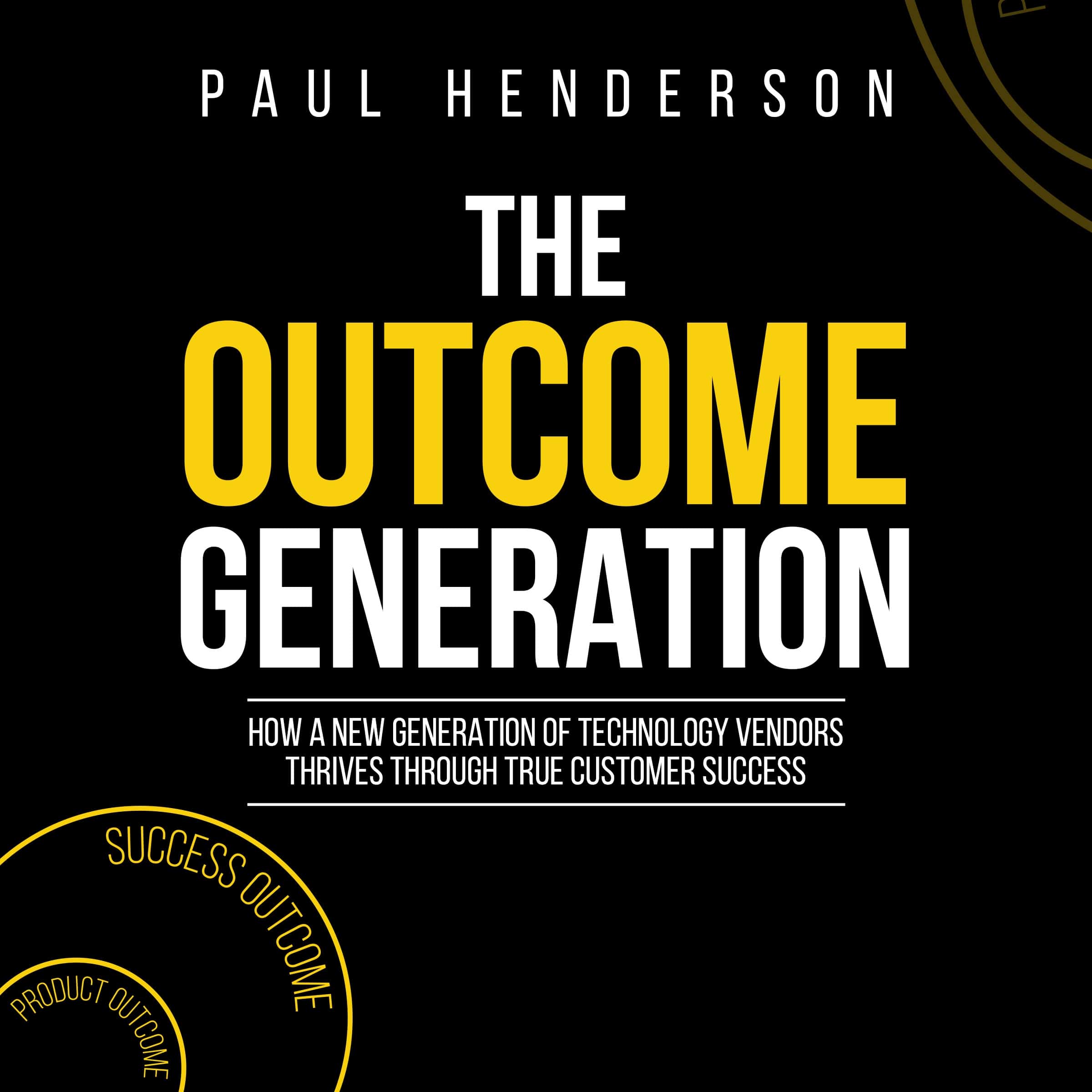How to Disrupt through New Delivery of a Business Outcome

We’d all love to disrupt our competitors. In technology, we see more and more disruptive products and services. And some of them produce spectacular results for the disruptor. Here’s one way of disrupting your market.
It Starts with a Business Outcome
Customers buy technology to achieve a business outcome. They may want to increase sales, or reduce costs, or improve customer service, or comply with government regulations. The customer buys the technology as the most effective way of achieving the business outcome they need. The technology is a means to an end.
If lots of customers need that business outcome, the vendor can do well. Product sales will be high.
The Danger of a Great Product
The vendor may feel they can rely on future sales of their product. And they want to increase sales by expanding their offering. They invest in making the product broader and deeper. Which creates the opportunity for upsell and cross-sell.
Sales of the product continue to grow. Which reinforces the sense that the product is the key. The vendor believes their role is to enhance and sell their product. And that’s what they do.
But danger can lurk. Unseen forces may gather.
Great Disruptors
Let’s look at some disruption examples from B2C. Sony launched the Walkman in 1979. The Walkman provided a revolutionary new outcome for consumers – ‘music made portable’. People could enjoy their music on the move. Sony offered a cassette tape version which evolved to a portable CD player. The Walkman reigned supreme for years.
For Sony, the Walkman sales outlook would have looked great. Then, in 1987, a Korean company introduced a new way to deliver the outcome of ‘music made portable’ – the first MP3 player. MP3 players disrupted the Walkman. Same outcome, different delivery. Then Apple introduced the iPod, which assured the decline of the Walkman.
Netflix provides a more recent example. They disrupted the video-store industry. We could describe the outcome delivered by video-stores as – ‘entertained at home’. The first disruption by Netflix overcame the need to go to a store to rent a video. Netflix customers could order online, and Netflix would deliver. They enabled the same outcome of ‘entertained at home’ but used a new delivery method.
Netflix then went a step further and provided video streaming. And that really sounded the death-knell for video stores (and Netflix’s own video business, by the way). Again, the same outcome but a new delivery method.
In the B2B space, we see another example in CRM. For years, Siebel was the dominant player. They delivered the product on-premise. Sales revenue was huge and growing. The future looked awesome. Then Salesforce arrived on the scene. Same outcome, but now delivered in the cloud. And Salesforce boomed, at Siebel’s expense.
Product Focus
Lots of vendors would argue their job is to deliver a great product. That’s what the invoice to the customer says. The customer pays for the product.
But that’s not why customers pay the money. They pay the money to achieve the business outcome they need. And they’ve decided the vendor’s product is the best way to achieve the outcome.
A Better Option
Customers will continue to buy the vendor’s product….until there’s a better option. If a better method of achieving the outcome appears, customers will change. That can completely disrupt a vendor’s business. And it can happen quickly, as we saw for Sony, for video stores and for Siebel.
The Task for Vendors
The task for vendors is not to deliver a great product. The job is to enable the customer’s business outcome in the most effective way. The current product is the way that happens right now. And of course, in the absence of a disruptor, the vendor must deliver a great product. Because that’s how customers currently achieve their business outcome.
But the vendor needs constant vigilance. They need to watch for the threat of a new delivery method from another company. And the threat may not be from an established competitor. It may come from left field.
At the same time, they need to search for new delivery methods themselves. Because they might find the new delivery method that disrupts their own market. Even if that disrupts their own product or service, just as Netflix did to themselves.
So, the task for vendors is clear. Be the company that best enables the business outcome for customers. And regardless of the method, if they remain best at enabling the outcome, their future is rosy.
This article is based on the book; The Outcome Generation: How a New Generation of Technology Vendors Thrives through True Customer Success
Paul Henderson is an author, speaker and consultant on outcome-based customer success for technology vendors. His last role was leading the Asia Pacific region of an enterprise software company. He saw the potential that could come from delivering real and measurable business success for customers. So, he initiated a customer success program based on customer outcomes. He and his colleagues developed, modified and proved the model over more than five years. He thespent one a half years researching and writing, culminating in the release of The Outcome Generation.
+61 1300-859791
pjh@outcomeleaders.com
facebook.com/outcomeleaders
linkedin.com/outcomeleaders
youtube.com/outcomeleaders
Receive the latest on Outcome-based Customer Success |
Send us a Message
Error: Contact form not found.



